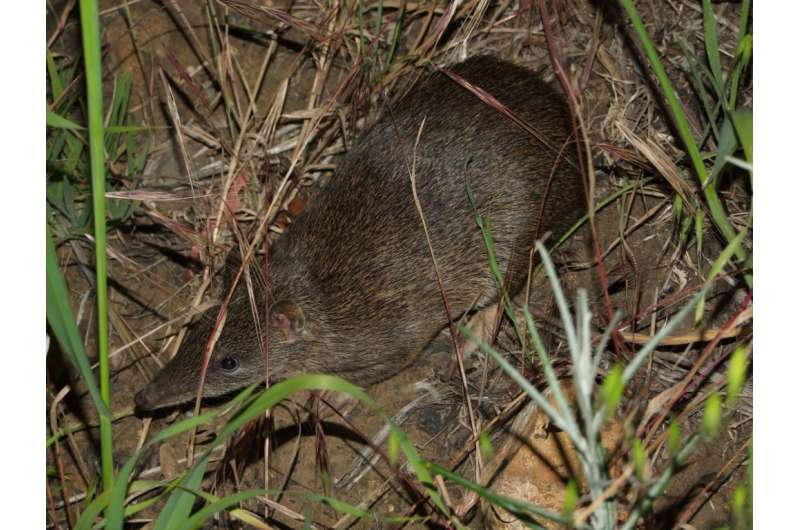Historical coexistence with dingoes may explain bandicoot avoidance of domestic dogs

Domestic dogs and cats were introduced to Tasmania two centuries ago, but bandicoots still fail to recognize these introduced predators as threats, according a study published September 7, 2016 in the open-access journal PLOS ONE by Anke Frank from University of Tasmania, Australia, and colleagues.
Worldwide, introduced predators have caused declines and extinctions of native wildlife, presumably in part because native species do not see novel predators as threats and thus fail to flee or defend themselves. But this naiveté is not necessarily forever: bandicoots in Sydney avoid backyards with domestic dogs. Interestingly, however, Sydney bandicoots do not avoid domestic cats even though they, like domestic dogs, were introduced about 200 years ago. This varying behavior to introduced predators has been attributed to the fact that dingoes arrived in mainland Australia 4000 years ago, predisposing Sydney bandicoots to avoid domestic dogs.
To test this hypothesis, Frank and colleagues assessed bandicoot behavior in Tasmania, where domestic dogs have been present for 200 years but where dingoes have never been present. The researchers surveyed 548 people in Hobart, Tasmania—37% of whom owned at least one dog and 20% of whom owned at least one cat—about bandicoot sightings and scats in their backyards.
More than a quarter of participants reported that their pets had killed bandicoots, showing that predation from these introduced predators was a real threat. Even so, the survey showed that Tasmanian bandicoot sightings and scats were equally likely in backyards with or without domestic dogs or cats. These findings support the hypothesis that bandicoots on mainland Australia may recognize dogs as predators due to thousands of years of exposure to dingoes, and suggests that naiveté to introduced predators can ultimately be overcome.
"By using a citizen science approach, my collaborators and I found that - unlike Australian mainland bandicoots - bandicoots from the island state of Tasmania are naïve to domestic dogs," said Anke Frank. "This study supports our hypothesis that naiveté towards unfamiliar predators may eventually be overcome, but that in Tasmania 200 years of exposure have been an insufficient time for bandicoots to recognize cats as well as dogs as a threat."
More information: Frank ASK, Carthey AJR, Banks PB (2016) Does Historical Coexistence with Dingoes Explain Current Avoidance of Domestic Dogs? Island Bandicoots Are Naïve to Dogs, unlike Their Mainland Counterparts. PLoS ONE 11(9): e0161447. DOI: 10.1371/journal.pone.0161447
Journal information: PLoS ONE
Provided by Public Library of Science





















